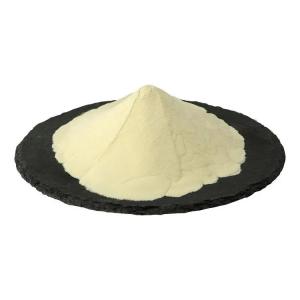Phosphatidyl serine is part of rice cracker formulations.
Time:2025-08-21Phosphatidylserine (PS) is a naturally occurring phospholipid found in cell membranes, particularly concentrated in the brain. In the food industry, it is often incorporated into functional formulations due to its structural and nutritional characteristics. Among various food applications, rice crackers have emerged as a convenient vehicle for integrating phosphatidylserine, combining traditional snack appeal with modern formulation science.
Characteristics of Phosphatidylserine
Phosphatidylserine belongs to the phosphoglyceride family, consisting of a glycerol backbone, fatty acid chains, phosphate, and the amino acid serine. Its amphiphilic nature allows it to interact with both lipophilic and hydrophilic components in food systems. This dual property makes it useful for improving formulation stability, enhancing texture, and supporting uniform dispersion in baked and extruded snacks.
Role in Rice Cracker Formulations
In rice cracker manufacturing, the incorporation of phosphatidylserine serves several technical functions:
Compatibility with Starch Matrix
Rice crackers are predominantly composed of rice flour and starch. Phosphatidylserine can integrate into the starch–protein network, contributing to structural uniformity during baking or puffing processes.
Emulsification and Binding
PS functions as a natural emulsifier, aiding in the distribution of oils, flavoring agents, and micronutrients throughout the rice cracker dough. This leads to improved mouthfeel and consistent flavor release.
Process Stability
During high-temperature extrusion or baking, lipid-based additives often face degradation or uneven dispersion. Phosphatidylserine exhibits relatively good thermal stability, helping maintain formulation integrity.
Texture and Crispness
The inclusion of phosphatidylserine may influence the porosity and crispness of rice crackers by modulating the interaction between lipids and starch granules during puffing, thereby contributing to desirable sensory properties.
Formulation Considerations
Source of Phosphatidylserine: It can be derived from soy lecithin, sunflower lecithin, or other plant-based sources suitable for food use.
Dosage and Uniformity: Optimizing concentration is essential to achieve balance between functional effects and maintaining the traditional characteristics of rice crackers.
Stability During Storage: Encapsulation techniques or protective carriers may be employed to safeguard phosphatidylserine from oxidation, thereby extending product shelf life.
Regulatory Aspects: Different regions may classify phosphatidylserine as a food ingredient, dietary supplement component, or functional additive, necessitating compliance with local food regulations.
Potential Applications Beyond Standard Rice Crackers
Phosphatidylserine-enriched rice crackers can be further developed into:
Fortified snack products targeting functional food markets.
Convenience foods for children or adults seeking alternative nutrient delivery systems.
Specialty products designed for athletes or consumers interested in novel formulations.
Conclusion
The integration of phosphatidylserine into rice cracker formulations reflects the ongoing convergence of traditional snack production and functional ingredient technology. By leveraging its emulsifying, stabilizing, and structural properties, manufacturers can create rice crackers that maintain desirable sensory qualities while incorporating innovative food science elements. As consumer interest in enhanced food products grows, phosphatidylserine-enriched rice crackers represent an intersection of tradition, nutrition, and modern formulation strategies.


 CN
CN





